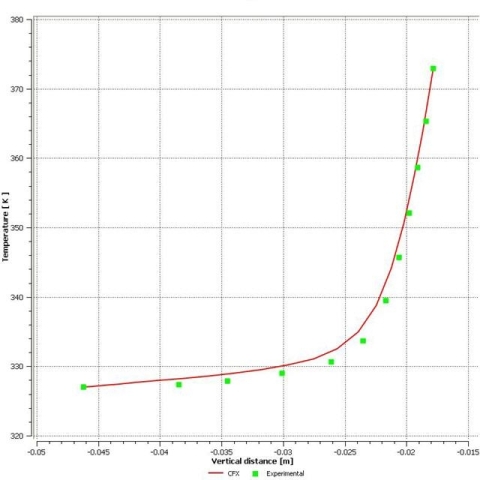VMFL009
VMFL009
Natural
Convection in a Concentric Annulus
Overview
| Reference | T.H. Kuehn, R.J. Goldstein, “An Experimental Study of Natural Convection Heat Transfer in Concentric and Eccentric Horizontal Cylindrical Annuli”, Journal of Heat Transfer, Vol 100, pp. 635-640, 1978. |
| Solver | Ansys Fluent, Ansys CFX |
| Physics/Models | Heat transfer, natural convection, laminar flow |
| Input Files |
|
| Project Files | Link to Project Files Download Page |
Test Case
Natural convection inside a concentric annular domain. The inner wall is maintained at a higher temperature than the outer wall, thereby causing buoyancy induced circulation.
Only half of the domain is modeled due to symmetry.
| Material Properties | Geometry | Boundary Conditions |
|---|---|---|
|
Density: Incompressible ideal gas Viscosity: 2.081 X 10-5 kg/m-s Specific Heat: 1008 J/kg-K Thermal Conductivity: 0.02967 W/m-K |
Radius of outer cylinder = 46.25 mm Radius of inner cylinder = 17.8 mm |
Inner wall temperature = 373 K Outer wall temperature = 327 K |
Analysis Assumptions and Modeling Notes
The flow is symmetric and only half of the domain is modeled. Density is calculated based on incompressible ideal gas assumption. The flow is laminar.





